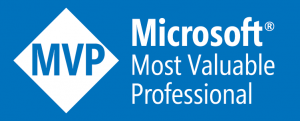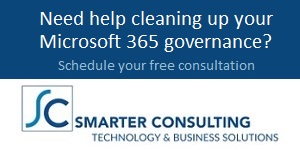High-Functioning Neurodivergence: Peaks, Valleys, and Proactive Management
When I was 10 or 11 years old, I was diagnosed with obsessive-compulsive disorder (OCD). While some of my siblings experienced neurodivergence behaviors and ticks (compulsions to clean, fear of germs, etc) that are commonly associated with the disorder, my anxieties surfaced as counting things, obsessing over the numbers 8 and 10, occasional panic attacks, and in symmetry of myself and the things around me. The diagnosis explained much of what I was experiencing as a youth, but the definitions never felt like they completely fit what I was experiencing. Over time, I was able to self-manage most aspects of the condition.
 It wasn’t until my late 20’s that I was diagnosed with ADHD. Understanding the differences between the two suddenly flipped a switch in my brain, and I finally understood (well, better understood) my lived experience. Living with high-functioning ADHD is like riding a roller coaster with steep peaks of hyper-productivity and deep valleys of stagnation. While the ability to hyperfocus allows for bursts of exceptional efficiency, the inevitable crashes into exhaustion or procrastination can make consistency seem unattainable. However, by leveraging proactive strategies—such as breaking tasks into smaller, achievable components, utilizing structured lists, and incorporating caffeine as a cognitive enhancer—people with ADHD can better manage their dopamine needs and find a sustainable rhythm in their productivity.
It wasn’t until my late 20’s that I was diagnosed with ADHD. Understanding the differences between the two suddenly flipped a switch in my brain, and I finally understood (well, better understood) my lived experience. Living with high-functioning ADHD is like riding a roller coaster with steep peaks of hyper-productivity and deep valleys of stagnation. While the ability to hyperfocus allows for bursts of exceptional efficiency, the inevitable crashes into exhaustion or procrastination can make consistency seem unattainable. However, by leveraging proactive strategies—such as breaking tasks into smaller, achievable components, utilizing structured lists, and incorporating caffeine as a cognitive enhancer—people with ADHD can better manage their dopamine needs and find a sustainable rhythm in their productivity.
The ADHD-OCD Connection
For those with both ADHD and OCD, the interplay of these conditions creates a unique dynamic. While ADHD craves novelty, instant gratification, and impulsive action, OCD demands structure, order, and compulsive rituals. As Rhiannon Giles describes in ADHD and OCD: My Codependent Frenemies, the relationship between these two conditions can feel like an internal tug-of-war.
“I have an obsessive thought that creates anxiety. So I perform a compulsive action or thought to make it better. Making it better gives relief, and relief makes dopamine. Therefore, the compulsion not only relieves the anxiety temporarily but also activates my brain. Trying to avoid a compulsion, on the other hand, produces a hefty dose of adrenaline while dopamine and serotonin perform an endless dance in my brain. OCD exploits the poor impulse control of ADHD. It is so much easier to ‘give in’ to a compulsion for that quick relief.”
While this cycle can be overwhelming, it can also be harnessed for productivity. By channeling compulsive tendencies into structured workflows and using ADHD’s hyperfocus constructively, individuals can transform these challenges into a source of strength.
Harnessing ADHD for Productivity: The Peaks
One of the most fascinating aspects of ADHD is the ability to hyperfocus—a state of intense concentration where an individual becomes deeply engrossed in a task. When this superpower is activated, it can lead to astonishing levels of productivity. Many people with ADHD report being able to accomplish more in an hour of hyperfocus than others can in an entire workday.
Hyperfocus allows individuals to:
- Complete complex projects in record time
- Dive deep into research with high levels of comprehension
- Solve intricate problems with creative and outside-the-box thinking
- Achieve a flow state where time seems to disappear
However, hyperfocus is often unpredictable. It can be difficult to channel it toward necessary tasks instead of interesting but unrelated distractions. Without careful management, individuals may find themselves deep into an unrelated rabbit hole, spending hours perfecting something that wasn’t even on their to-do list.
The Valleys: Struggles with Executive Dysfunction
Unfortunately, the flip side of hyperfocus is executive dysfunction. When dopamine levels are low, even the simplest tasks can feel insurmountable. This can result in:
- Procrastination or avoidance of responsibilities
- Difficulty initiating tasks, even ones that are enjoyable
- Forgetfulness and struggles with organization
- Overwhelm caused by large, unstructured projects
These productivity valleys are often accompanied by self-doubt and frustration. Many individuals with ADHD internalize negative societal messages, labeling themselves as lazy or undisciplined when, in reality, their brain simply operates on a different dopamine cycle.
Managing Dopamine Needs: Lists, Tasks, and Small Wins
The key to balancing productivity peaks and valleys lies in proactive management. By structuring work in a way that provides frequent dopamine rewards, individuals can create a more stable and sustainable level of productivity. Here are some of the ways that I try to manage it:
1. The Power of Lists
Lists are a simple yet highly effective tool for ADHD management. They provide structure, accountability, and—most importantly—dopamine boosts. Each time an item is checked off, the brain receives a small hit of dopamine, reinforcing a sense of accomplishment.
Best practices for ADHD-friendly lists:
- Break larger and more complex tasks into small, manageable steps
- Use checkboxes for an added sense of reward
- Color-code or categorize tasks by urgency and importance
- Keep lists visually accessible, whether on a whiteboard, planner, or app
- As tasks are completed, mark them off. For me, this is an X in the box AND a double-line through the task
2. Completing Work in Smaller Scope
Large tasks can feel overwhelming, leading to avoidance and procrastination. Instead, breaking work into microtasks makes it easier to build momentum. Early in my career, the need to break complexity down into achievable steps is part of the reason I became a Project Manager.
For example, instead of writing “Finish report,” break it down into:
- Outline report
- Write introduction
- Write section one
- Write section two
- Proofread
- Print and publish
By focusing on small wins, motivation is sustained throughout the process.
3. Using Caffeine Strategically
Caffeine can serve as a mild stimulant that helps increase focus and alertness in those with ADHD. While prescription stimulants are often prescribed, I am not a fan of them. For me, a sugar-free caffeinated drink provides a temporary boost in dopamine and executive functioning without the downsides of a behind-the-counter drug. My beverage of choice is to blend one or two diet Monsters (almost always peach) into a 2-liter bottle of sugar-free ginger ale, which lasts me two or three days (with copious amounts of ice).
Tips for effective caffeine use:
- Pair caffeine intake with focused work sessions
- Avoid overconsumption to prevent crashes
- Time intake strategically to coincide with peak productivity hours
4. The Pomodoro Technique: Work in Bursts
The Pomodoro Technique is an ADHD-friendly productivity method that involves working for 25-minute bursts, followed by short breaks. This aligns with ADHD’s natural energy fluctuations and provides structured intervals for focus. Personally, this is too short of a period. I prefer to work 55 minutes to an hour, and then take a break.
Steps to implement:
- Set a timer for 25 minutes.
- Work on a task with full focus.
- Take a 5-minute break.
- Repeat the cycle four times, then take a longer break.
Turning ADHD into a Superpower
When properly managed, my combination of OCD and ADHD can be a productivity powerhouse. The ability to hyperfocus, think creatively, and work efficiently in short bursts can be a major advantage in many professional and creative fields. Instead of viewing your neurodivergence as a flaw, reframing it as a unique cognitive style can shift the narrative from struggle to empowerment. OCD is not a weakness; it is a brain that prefers patterns and structure. ADHD is not a lack of discipline; it is a brain that functions optimally under different conditions.
High-functioning OCD and ADHD present both incredible opportunities and significant challenges. While the peaks of productivity can feel exhilarating, the valleys can be frustrating and demoralizing. However, by proactively managing dopamine needs through structured lists, task segmentation, and small victories, individuals can create a balanced and sustainable workflow. When harnessed correctly, they are not a hindrance—they are a superpower waiting to be unlocked.
For those looking to learn more about the intersection of ADHD and OCD, check out When OCD and ADHD Coexist: Symptom Presentation, Diagnosis, and Treatment by Roberto Olivardia, Ph.D. He provides further insights into symptom management and coping strategies.
By understanding and embracing the way the OCD and ADHD brain functions, it is possible to thrive in a world that often feels at odds with neurodivergent thinking. The key is not to fight the natural rhythms of your brain but to work with them, finding strategies that transform chaos into productivity, one task at a time.




